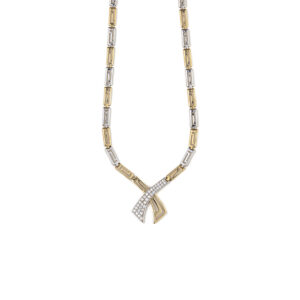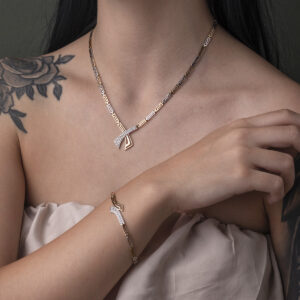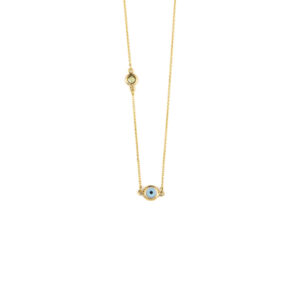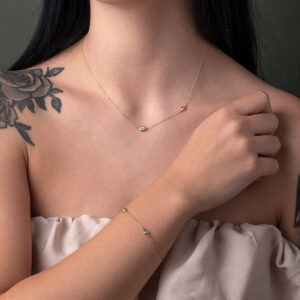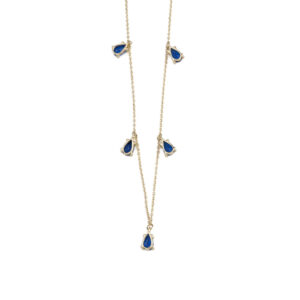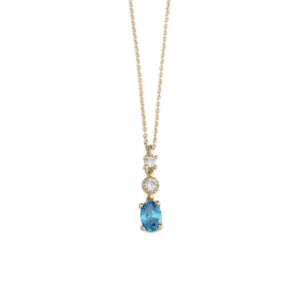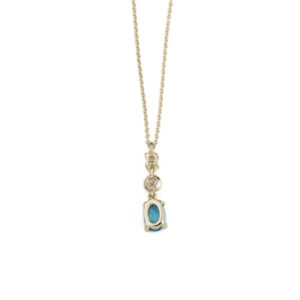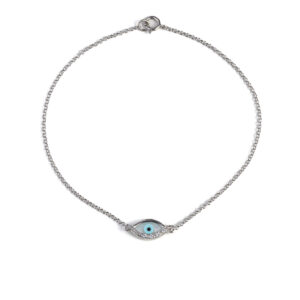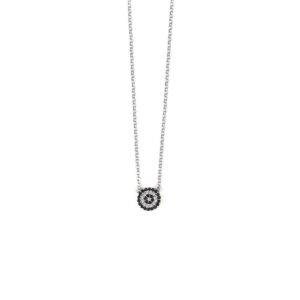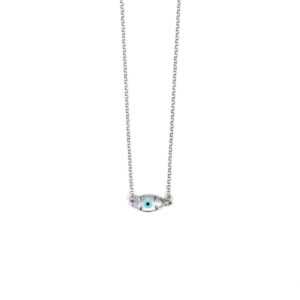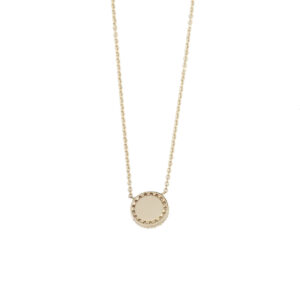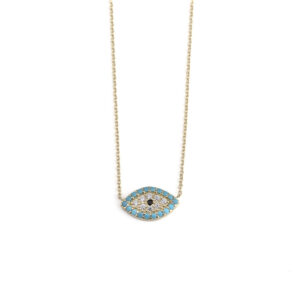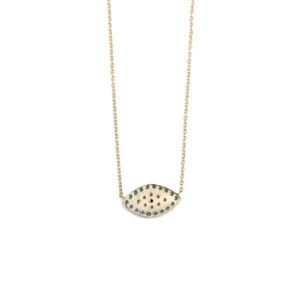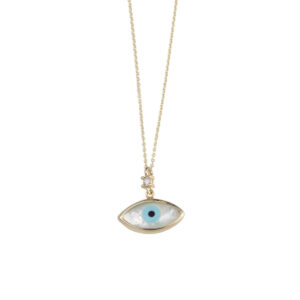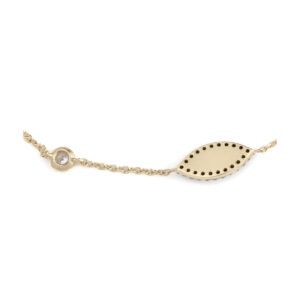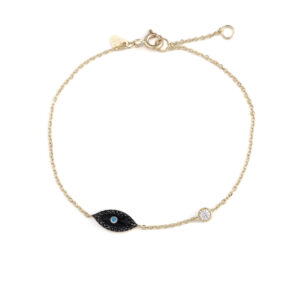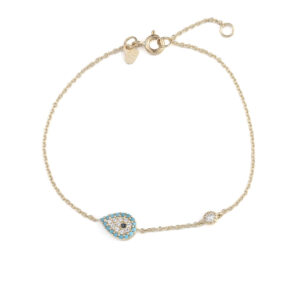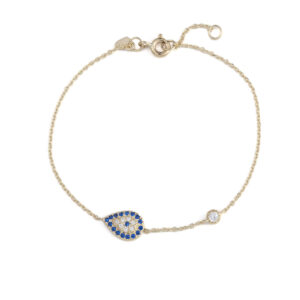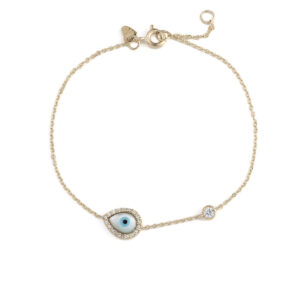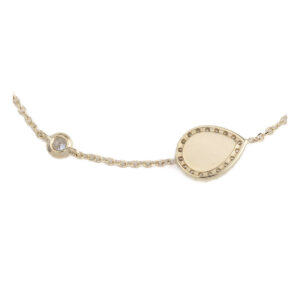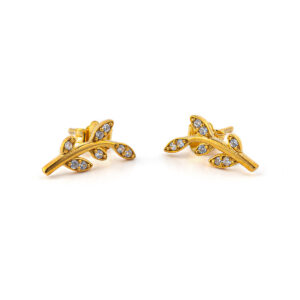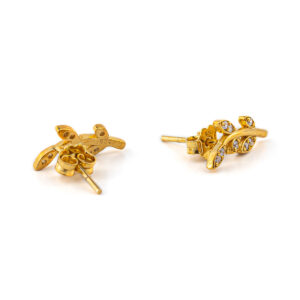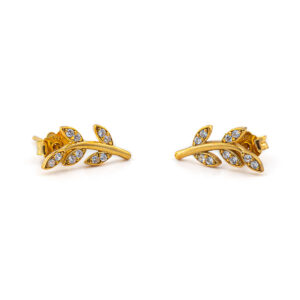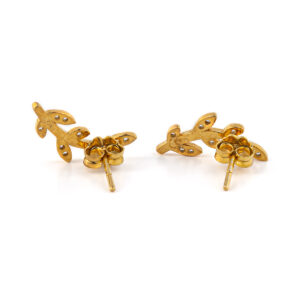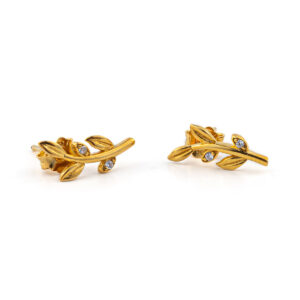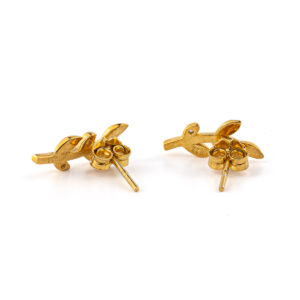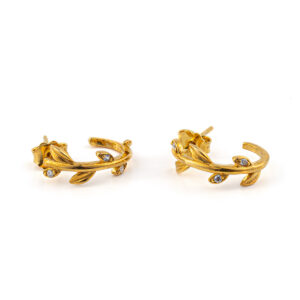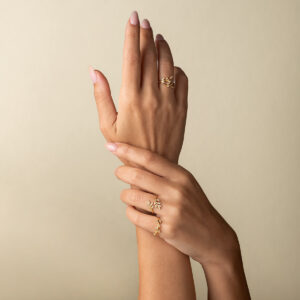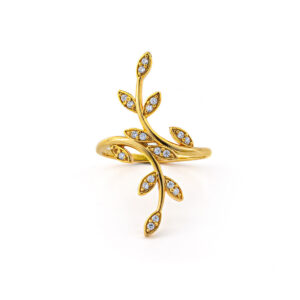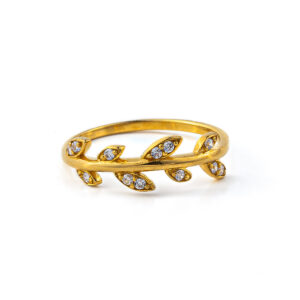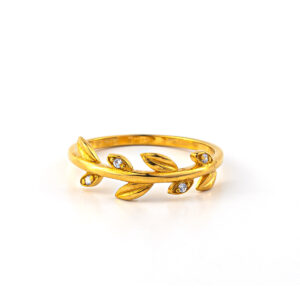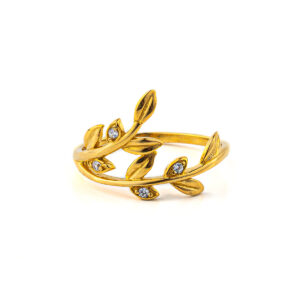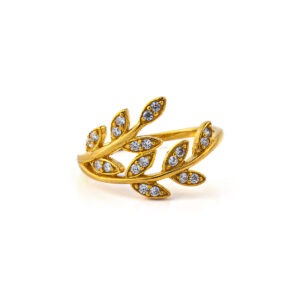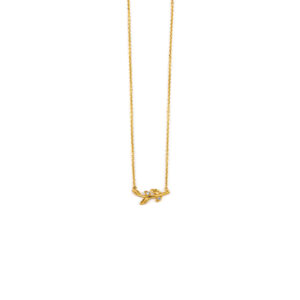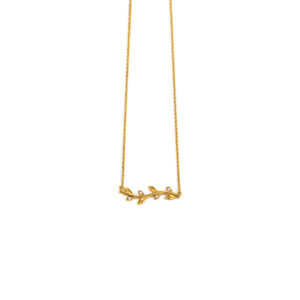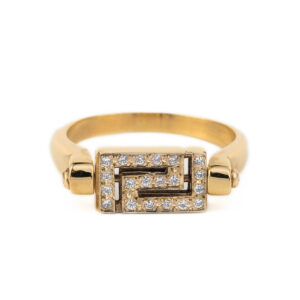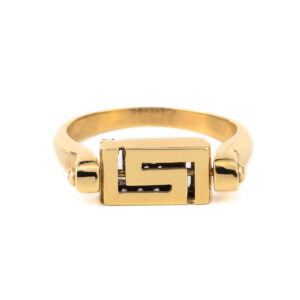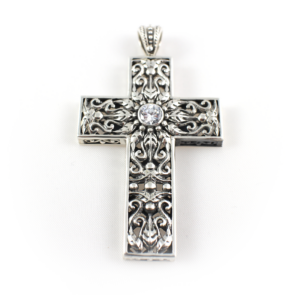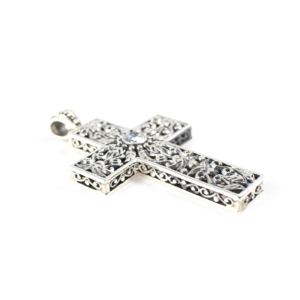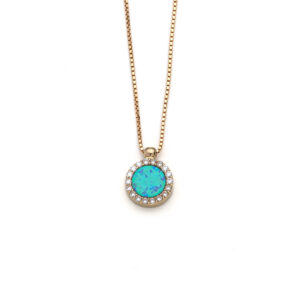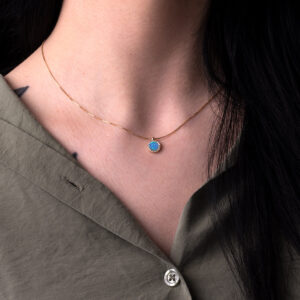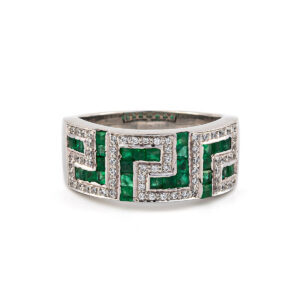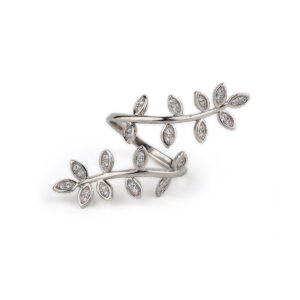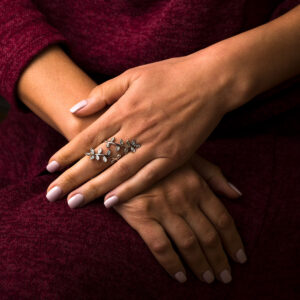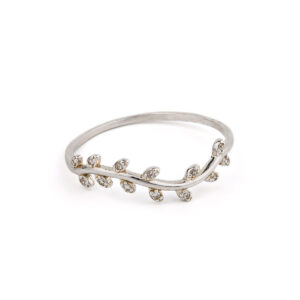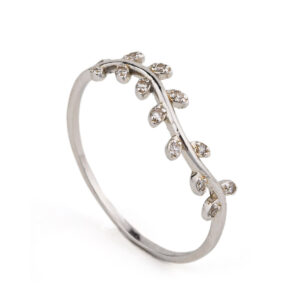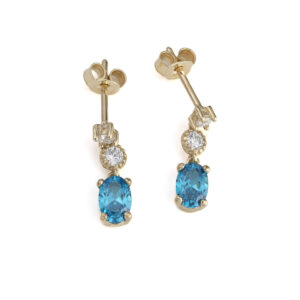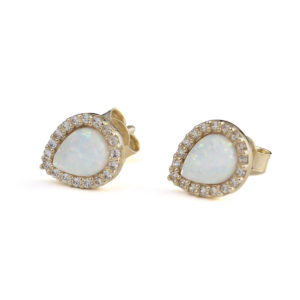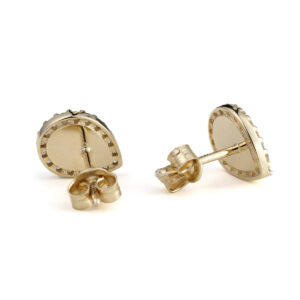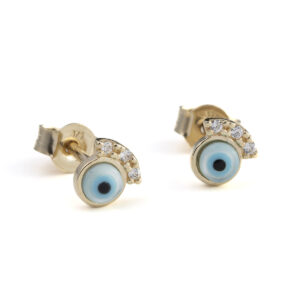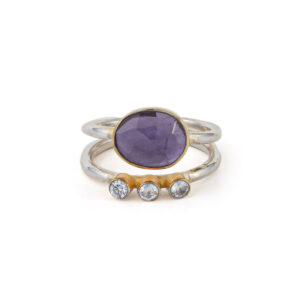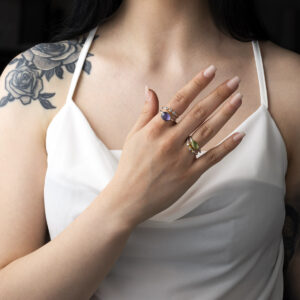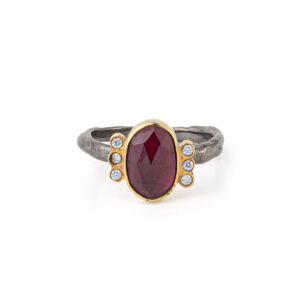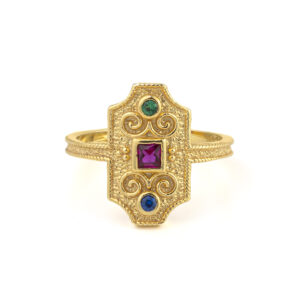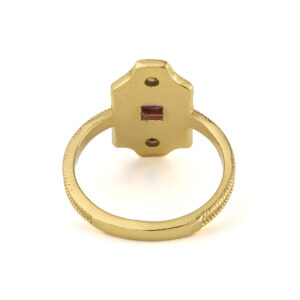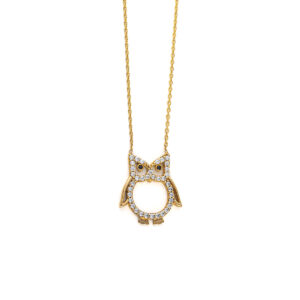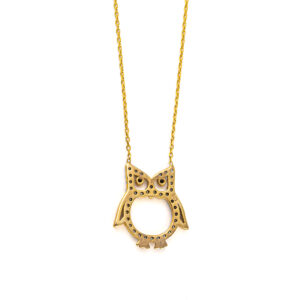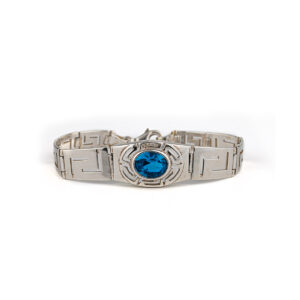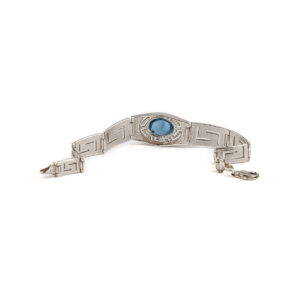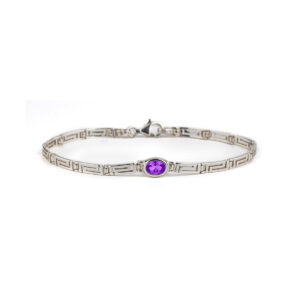Κολιέ με Μάτι Κυκλικό – 14Κ Χρυσό
642,00€Φτιαγμένο από χρυσό 14Κ.
Χειροποίητο κόσμημα.
The symbol and superstition of the evil eye is one of the strongest symbolic images in the world. The earliest known evidence for belief in the evil eye goes back to ancient Greece and Rome. It is supposed to wear off evil to anyone who wears it.
Κολιέ με Κρεμαστά Μπλε Ζιργκόν – Χρυσό 9Κ
285,00€Κατασκευασμένο από χρυσό 9Κ.
Χειροποίητο Ελληνικό κόσμημα.
Κολιέ με Μάτι και Ζιργκόν – Ασήμι 925
Κολιέ με μάτι κατασκευασμένο από Ασήμι 925.
Κολιέ με Μάτι και Μπλε Ζιργκόν – 9Κ Χρυσό
210,00€Κολιέ με μάτι κατασκευασμένο από χρυσό 9 καρατίων.
Κολιέ με Μάτι και Τυρκουάζ Ζιργκόν – 9Κ Χρυσό
192,00€Κολιέ με μάτι κατασκευασμένο από χρυσό 9 καρατίων.
Κολιέ Στρογγυλό Μάτι – 9Κ Χρυσό και Ζιργκόν
252,00€Κολιέ με μάτι κατασκευασμένο από χρυσό 9 καρατίων.
Κολιέ Σταγόνα Ματάκι και Ζιργκόν – 9Κ Χρυσό
215,00€Κολιέ με μάτι κατασκευασμένο από χρυσό 9 καρατίων.
Βραχιόλι με Μάτι και Μπλε Ζιργκόν – 9Κ Χρυσό
178,00€Made of 9K yellow gold
Handmade in Greece
The symbol and superstition of the evil eye is one of the strongest symbolic images in the world. The earliest known evidence for belief in the evil eye goes back to ancient Greece and Rome. It is supposed to wear off evil to anyone who wears it.
Βραχιόλι Ματάκι – 9Κ Χρυσό και Ζιργκόν
178,00€Made of 9K yellow gold
Handmade in Greece
The symbol and superstition of the evil eye is one of the strongest symbolic images in the world. The earliest known evidence for belief in the evil eye goes back to ancient Greece and Rome. It is supposed to wear off evil to anyone who wears it.
Βραχιόλι Μαύρο Ματάκι – 9Κ Χρυσό
178,00€Made of 9K yellow gold
Handmade in Greece
The symbol and superstition of the evil eye is one of the strongest symbolic images in the world. The earliest known evidence for belief in the evil eye goes back to ancient Greece and Rome. It is supposed to wear off evil to anyone who wears it.
Βραχιόλι Μάτι με Τυρκουάζ Ζιργκόν – 9Κ Χρυσό
178,00€Made of 9K yellow gold
Handmade in Greece
The symbol and superstition of the evil eye is one of the strongest symbolic images in the world. The earliest known evidence for belief in the evil eye goes back to ancient Greece and Rome. It is supposed to wear off evil to anyone who wears it.
Βραχιόλι Μάτι με Μπλε Ζιργκόν – 9Κ Χρυσό
178,00€Made of 9K yellow gold
Handmade in Greece
The symbol and superstition of the evil eye is one of the strongest symbolic images in the world. The earliest known evidence for belief in the evil eye goes back to ancient Greece and Rome. It is supposed to wear off evil to anyone who wears it.
Βραχιόλι Σταγόνα Ματάκι και Ζιργκόν – 9Κ Χρυσό
189,00€Βραχιόλι με μάτι κατασκευασμένο από χρυσό 9 καρατίων.
Σκουλαρίκια Κλαδί – 14Κ Χρυσό με Ζιργκόν
428,00€Earrings inspired by the olive leaf symbol.
Made of 14k gold with zircon.
The olive wreath also known as kotinos was the prize for the winner at the ancient Olympic Games. It was an olive branch, of the wild- olive tree that grew at Olympia,intertwined to form a circle or a horse-shoe. According to Pausanias it was introduced by Heracles as a prize for the running race winner to honour his father Zeus. In the ancient Olympic Games there were no gold, silver, or bronze medals. There was only one winner per event, crowned with an olive wreath made of wild-olive leaves from a sacred tree near the temple of Zeus at Olympia. Olive wreaths were given out during the 2004 Summer Olympics in Athens in honor of the ancient tradition, because the games were being held in Greece.
Σκουλαρίκια Κλαδί – 14Κ Χρυσό με Ζιργκόν
568,00€Earrings inspired by the olive leaf symbol.
Made of 14k gold with zircon.
The olive wreath also known as kotinos was the prize for the winner at the ancient Olympic Games. It was an olive branch, of the wild- olive tree that grew at Olympia,intertwined to form a circle or a horse-shoe. According to Pausanias it was introduced by Heracles as a prize for the running race winner to honour his father Zeus. In the ancient Olympic Games there were no gold, silver, or bronze medals. There was only one winner per event, crowned with an olive wreath made of wild-olive leaves from a sacred tree near the temple of Zeus at Olympia. Olive wreaths were given out during the 2004 Summer Olympics in Athens in honor of the ancient tradition, because the games were being held in Greece.
Σκουλαρίκια Κλαδί – 14Κ Χρυσό με Ζιργκόν
514,00€Earrings inspired by the olive leaf symbol.
Made of 14k gold with zircon.
The olive wreath also known as kotinos was the prize for the winner at the ancient Olympic Games. It was an olive branch, of the wild- olive tree that grew at Olympia,intertwined to form a circle or a horse-shoe. According to Pausanias it was introduced by Heracles as a prize for the running race winner to honour his father Zeus. In the ancient Olympic Games there were no gold, silver, or bronze medals. There was only one winner per event, crowned with an olive wreath made of wild-olive leaves from a sacred tree near the temple of Zeus at Olympia. Olive wreaths were given out during the 2004 Summer Olympics in Athens in honor of the ancient tradition, because the games were being held in Greece.
Σκουλαρίκια Κλαδί – 14Κ Χρυσό με Ζιργκόν
428,00€Earrings inspired by the olive leaf symbol.
Made of 14k gold with zircon.
The olive wreath also known as kotinos was the prize for the winner at the ancient Olympic Games. It was an olive branch, of the wild- olive tree that grew at Olympia,intertwined to form a circle or a horse-shoe. According to Pausanias it was introduced by Heracles as a prize for the running race winner to honour his father Zeus. In the ancient Olympic Games there were no gold, silver, or bronze medals. There was only one winner per event, crowned with an olive wreath made of wild-olive leaves from a sacred tree near the temple of Zeus at Olympia. Olive wreaths were given out during the 2004 Summer Olympics in Athens in honor of the ancient tradition, because the games were being held in Greece.
Σκουλαρίκια Κλαδί – 14Κ Χρυσό με Ζιργκόν
620,00€Earrings inspired by the olive leaf symbol.
Made of 14k gold with zircon.
The olive wreath also known as kotinos was the prize for the winner at the ancient Olympic Games. It was an olive branch, of the wild- olive tree that grew at Olympia,intertwined to form a circle or a horse-shoe. According to Pausanias it was introduced by Heracles as a prize for the running race winner to honour his father Zeus. In the ancient Olympic Games there were no gold, silver, or bronze medals. There was only one winner per event, crowned with an olive wreath made of wild-olive leaves from a sacred tree near the temple of Zeus at Olympia. Olive wreaths were given out during the 2004 Summer Olympics in Athens in honor of the ancient tradition, because the games were being held in Greece.
Δαχτυλίδι Κλαδί – 14Κ Χρυσό με Ζιργκόν
528,00€Ring inspired by the olive leaf symbol.
Made of 14k gold with zircon.
The olive wreath also known as kotinos was the prize for the winner at the ancient Olympic Games. It was an olive branch, of the wild- olive tree that grew at Olympia,intertwined to form a circle or a horse-shoe. According to Pausanias it was introduced by Heracles as a prize for the running race winner to honour his father Zeus. In the ancient Olympic Games there were no gold, silver, or bronze medals. There was only one winner per event, crowned with an olive wreath made of wild-olive leaves from a sacred tree near the temple of Zeus at Olympia. Olive wreaths were given out during the 2004 Summer Olympics in Athens in honor of the ancient tradition, because the games were being held in Greece.
Δαχτυλίδι Κλαδί – 14Κ Χρυσό με Ζιργκόν
582,00€Ring inspired by the olive leaf symbol.
Made of 14k gold with zircon.
The olive wreath also known as kotinos was the prize for the winner at the ancient Olympic Games. It was an olive branch, of the wild- olive tree that grew at Olympia,intertwined to form a circle or a horse-shoe. According to Pausanias it was introduced by Heracles as a prize for the running race winner to honour his father Zeus. In the ancient Olympic Games there were no gold, silver, or bronze medals. There was only one winner per event, crowned with an olive wreath made of wild-olive leaves from a sacred tree near the temple of Zeus at Olympia. Olive wreaths were given out during the 2004 Summer Olympics in Athens in honor of the ancient tradition, because the games were being held in Greece.
Δαχτυλίδι Κλαδί – 14Κ Χρυσό με Ζιργκόν
418,00€Ring inspired by the olive leaf symbol.
Made of 14k gold with zircon.
The olive wreath also known as kotinos was the prize for the winner at the ancient Olympic Games. It was an olive branch, of the wild- olive tree that grew at Olympia,intertwined to form a circle or a horse-shoe. According to Pausanias it was introduced by Heracles as a prize for the running race winner to honour his father Zeus. In the ancient Olympic Games there were no gold, silver, or bronze medals. There was only one winner per event, crowned with an olive wreath made of wild-olive leaves from a sacred tree near the temple of Zeus at Olympia. Olive wreaths were given out during the 2004 Summer Olympics in Athens in honor of the ancient tradition, because the games were being held in Greece.
Δαχτυλίδι Κλαδί – 14Κ Χρυσό με Ζιργκόν
418,00€Ring inspired by the olive leaf symbol.
Made of 14k gold with zircon.
The olive wreath also known as kotinos was the prize for the winner at the ancient Olympic Games. It was an olive branch, of the wild- olive tree that grew at Olympia,intertwined to form a circle or a horse-shoe. According to Pausanias it was introduced by Heracles as a prize for the running race winner to honour his father Zeus. In the ancient Olympic Games there were no gold, silver, or bronze medals. There was only one winner per event, crowned with an olive wreath made of wild-olive leaves from a sacred tree near the temple of Zeus at Olympia. Olive wreaths were given out during the 2004 Summer Olympics in Athens in honor of the ancient tradition, because the games were being held in Greece.
Δαχτυλίδι Κλαδί – 14Κ Χρυσό με Ζιργκόν
494,00€Ring inspired by the olive leaf symbol.
Made of 14k gold with zircon.
The olive wreath also known as kotinos was the prize for the winner at the ancient Olympic Games. It was an olive branch, of the wild- olive tree that grew at Olympia,intertwined to form a circle or a horse-shoe. According to Pausanias it was introduced by Heracles as a prize for the running race winner to honour his father Zeus. In the ancient Olympic Games there were no gold, silver, or bronze medals. There was only one winner per event, crowned with an olive wreath made of wild-olive leaves from a sacred tree near the temple of Zeus at Olympia. Olive wreaths were given out during the 2004 Summer Olympics in Athens in honor of the ancient tradition, because the games were being held in Greece.
Δαχτυλίδι Κλαδί – 14Κ Χρυσό με Ζιργκόν
578,00€Ring inspired by the olive leaf symbol.
Made of 14k gold with zircon.
The olive wreath also known as kotinos was the prize for the winner at the ancient Olympic Games. It was an olive branch, of the wild- olive tree that grew at Olympia,intertwined to form a circle or a horse-shoe. According to Pausanias it was introduced by Heracles as a prize for the running race winner to honour his father Zeus. In the ancient Olympic Games there were no gold, silver, or bronze medals. There was only one winner per event, crowned with an olive wreath made of wild-olive leaves from a sacred tree near the temple of Zeus at Olympia. Olive wreaths were given out during the 2004 Summer Olympics in Athens in honor of the ancient tradition, because the games were being held in Greece.
Δαχτυλίδι Κλαδί – 14Κ Χρυσό με Ζιργκόν
602,00€Ring inspired by the olive leaf symbol.
Made of 14k gold with zircon.
The olive wreath also known as kotinos was the prize for the winner at the ancient Olympic Games. It was an olive branch, of the wild- olive tree that grew at Olympia,intertwined to form a circle or a horse-shoe. According to Pausanias it was introduced by Heracles as a prize for the running race winner to honour his father Zeus. In the ancient Olympic Games there were no gold, silver, or bronze medals. There was only one winner per event, crowned with an olive wreath made of wild-olive leaves from a sacred tree near the temple of Zeus at Olympia. Olive wreaths were given out during the 2004 Summer Olympics in Athens in honor of the ancient tradition, because the games were being held in Greece.
Κολιέ Κλαδί – 14Κ Χρυσό με Ζιργκόν
364,00€Made in 14K gold with zircon.
A necklace inspired from the olive branch, a symbol of peace, abundance and achievement.
Handmade item.
Κολιέ Κλαδί – 14Κ Χρυσό με Ζιργκόν
475,00€Made in 14K gold with zircon.
A necklace inspired from the olive branch, a symbol of peace, abundance and achievement.
Handmade item.
Δαχτυλίδι Μαίανδρος – 14Κ Χρυσό
792,00€Meander Ring in 14k Gold with white crystals inspired by the ancient Greek design the Meander or Greek Key.
Meandros design is a decorative border constructed from a continuous line, shaped into a repeated motif. Such a design is also called the Greek fret or Greek key design, although these are modern designations. One the one hand, the name “meander” recalls the twisting and turning path of the Meander River in Asia Minor, and on the other hand, as Karl Kerenyi pointed out, “the meander is the figure of a labyrinth in linear form” the meaning is that these is no beginning and to end in some cases so it become the symbol of long life and eternity.
Handmade item.
Βυζαντινός Σταυρός Ασήμι 925 – Yianni Jewelry
Cross Pendant with one ruby.
This cross decorated with “akrokeramo” design. Akrokeramo is a decorative, architectural element known by Ancient Greece. It is the ultimate tile that held in place the remaining tiles. The most widespread is the amphitheater with the leaves of the palm tree (anthemio).
Inspired by Greek tradition & Byzantine art.
Made in 925⁰ sterling silver
Handmade item.
These silver creations of Yianni Jewelry, created by Garbis Khacherian, a silversmith trader since 1987.
Meander Ring with Emeralds and Crystals
Ring with recurrent Greek key design the symbol of long life and eternity.
Made in 925⁰ sterling silver with emeralds and crystals.
Handmade item.
Meandros design is a decorative border constructed from a continuous line, shaped into a repeated motif. Such a design is also called the Greek fret or Greek key design, although these are modern designations. One the one hand, the name “meander” recalls the twisting and turning path of the Meander River in Asia Minor, and on the other hand, as Karl Kerenyi pointed out, “the meander is the figure of a labyrinth in linear form” the meaning is that these is no beginning and to end in some cases so it become the symbol of long life and eternity.
Olive Leaf Branch Ring – 925 Sterling Silver
Ring inspired by the olive leaf symbol.
Made of 925 Sterling Silver.
The olive wreath also known as kotinos was the prize for the winner at the ancient Olympic Games. It was an olive branch, of the wild- olive tree that grew at Olympia,intertwined to form a circle or a horse-shoe. According to Pausanias it was introduced by Heracles as a prize for the running race winner to honour his father Zeus. In the ancient Olympic Games there were no gold, silver, or bronze medals. There was only one winner per event, crowned with an olive wreath made of wild-olive leaves from a sacred tree near the temple of Zeus at Olympia. Olive wreaths were given out during the 2004 Summer Olympics in Athens in honor of the ancient tradition, because the games were being held in Greece.
Olive Leaf Ring with Zircon – Sterling Silver
The olive tree in Ancient Greece was a symbol of the Olympic ideal, since an olive branch was the only prize for the Olympic champions. Τhe olive tree symbolizes peace, victory, honor and prosperity.
Made of 925⁰ sterling silver.
Handmade item.
Σκουλαρίκια Λευκό Όπαλ με Ζιργκόν – 9Κ Χρυσό
232,00€Σκουλαρίκια φτιαγμένα από χρυσό Κ9 με λευκό όπαλ και ζιργκόν
Χειροποίητο κόσμημα.
Ανακαλύψτε τη συλλογή opal
Καρφωτά Σκουλαρίκια με Μάτι και Στέμμα – Χρυσό 9Κ
124,00€Φτιαγμένο από χρυσό 9Κ.
Χειροποίητο Ελληνικό Κόσμημα
Το ματάκι από την αρχαιότητα είχε σημαντικό συμβολικό χαρακτήρα για πολλούς λαούς. Αιώνες τώρα τα ματάκια είναι από τα πιο δημοφιλή φυλαχτά, ιδιαίτερα στην Ελλάδα αλλά και σε άλλες χώρες, αφού θεωρείται ότι έχουν την ιδιότητα να προστατεύουν το άτομο που τα φοράει.
Δαχτυλίδι Αμέθυστος και Ζιργκόν – Ασήμι 925 Επιχρυσωμένο
Κατασκευασμένο από επιχρυσωμένο ασήμι 925⁰.
Χειροποίητο ελληνικό κόσμημα.
Δαχτυλίδι Ροδολίτης και Zircon – Ασήμι 925 Επιχρυσωμένο
Κατασκευασμένο από επιχρυσωμένο ασήμι 925⁰.
Χειροποίητο ελληνικό κόσμημα.
Byzantine Ring with Stones – 925 Sterling Silver and Gold Plated
Made of 925 sterling silver and gold plated.
Handmade item.
Due to the handmade nature of each piece, the placement of the zircon stones may slightly vary.
Κολιέ Κουκουβάγια – Ασήμι 925 Επιχρυσωμένο με Ζιργκόν
Κατασκευασμένο από ασήμι 925.
Στην ελληνική μυθολογία, μια μικρή κουκουβάγια παραδοσιακά αντιπροσωπεύει ή συνοδεύει την Αθηνά, Θεά της σοφίας. Λόγω αυτής της συσχέτισης, το πουλί – που συχνά αναφέρεται ως «κουκουβάγια της Αθηνάς» έχει χρησιμοποιηθεί ως σύμβολο γνώσης, σοφίας, οξυδέρκειας και ευρυμάθειας.
Χειροποίητο ελληνικό κόσμημα.
Κολιέ Κουκουβάγια με Λευκά Ζιργκόν – Ασήμι 925 Επιχρυσωμένο
Κατασκευασμένο από ασήμι 925.
Στην ελληνική μυθολογία, μια μικρή κουκουβάγια παραδοσιακά αντιπροσωπεύει ή συνοδεύει την Αθηνά, Θεά της σοφίας. Λόγω αυτής της συσχέτισης, το πουλί – που συχνά αναφέρεται ως «κουκουβάγια της Αθηνάς» έχει χρησιμοποιηθεί ως σύμβολο γνώσης, σοφίας, οξυδέρκειας και ευρυμάθειας.
Χειροποίητο ελληνικό κόσμημα.
Βραχιόλι με Μαίανδρο και Ζιργκόν – Ασήμι 925
Βραχιόλι Ασημένιο με το μοτίβο του Μαιάνδρου.
Φτιαγμένο από ασήμι 925.
Χειροποίητο κόσμημα.
Βραχιόλι Μαίανδρος και Ζιργκόν – Ασήμι 925
Βραχιόλι με το μοτίβο του Μαιάνδρου.
Φτιαγμένο από ασήμι 925.
Χειροποίητο κόσμημα.
